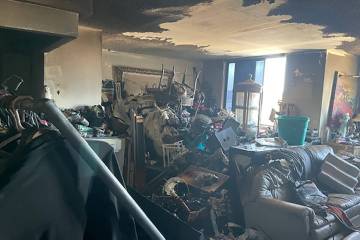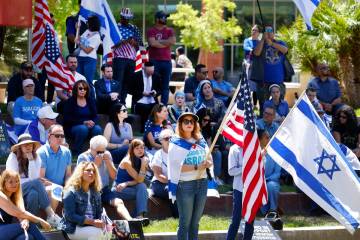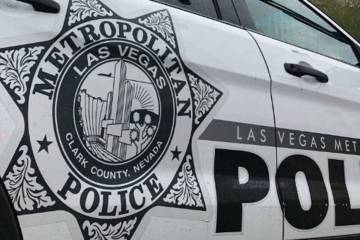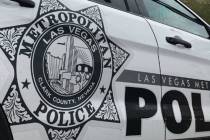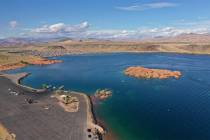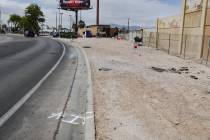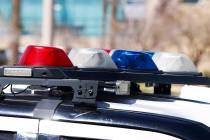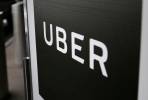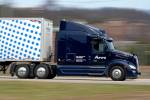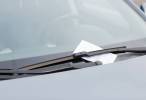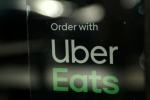Which offers Las Vegas a better ride – taxi or Uber?
A funny thing happened on my way to writing a story about the experience of riding with Uber.
It was almost like the time I flew on National Airlines for the first time, only to land in Dallas and learn that the airline was discontinuing operations later that day.
At least I was still in Las Vegas with a way to get home when Uber quit.
And, unlike National Airlines, Uber is likely to return to Southern Nevada. Someday.
Although that wasn’t amusing to Uber and its 1,000 contracted drivers in Southern Nevada, it likely resulted in high-fives within the taxi industry.
I had planned a series of trips between home and my office in a taxi and by Uber, alternating trips to get a feel for which offered the better timeliness, service and price.
Based on anecdotal evidence collected on the battle between taxis and Uber, I could expect taxi drivers and their cabs to smell bad, that they’d drive like maniacs and it would take them forever to arrive at my house, if they came at all.
The Uber drivers would be friendly, their cars clean and comfortable and their Google Maps-powered apps would get them to the house so fast it would be as if they were parked in my next door neighbor’s garage.
But what happened didn’t support all the anecdotal evidence.
The overall assessment: The cabs and the Uber cars were clean. The drivers of both were personable and they spoke English, an issue, it seems, here and in other markets. For the distance I traveled, the fares were comparable — within a couple of dollars — but the Uber payment system was much simpler.
Uber’s biggest edge was in pickup time. On average, Uber drivers arrived six times faster than the cabs.
Now before you contact me to outline every detail of your miserable cab experience in Las Vegas, understand that I get it. My experience was limited to four trips, and may be much different than yours. Las Vegas’ cab companies notoriously underserve neighborhoods, preferring instead to get more lucrative fares at McCarran International Airport and the Strip, where there’s usually a steady stream of customers. Serving neighborhoods where customers need an occasional ride to the store or the doctor requires patience and perseverance. It isn’t the best way for a cabby to make a living.
Uber understands that, too. The company tried to enter the Las Vegas market by avoiding the airport and the Strip and focus instead on outlying neighborhoods as a way to stay out of the taxi industry’s way and attract less attention to themselves, avoiding run-ins with Nevada Taxicab Authority regulatory enforcement officers.
So much for that strategy.
UBER ON
My first Uber ride from my North Las Vegas home to the Las Vegas Review-Journal office near downtown Las Vegas was with Ron. Once I hit the app button ordering a ride, I was told he would arrive within three minutes. The estimated fare: $20 to $27.
The order was confirmed on my smartphone. I was shown a picture of Ron and told he would arrive in a silver Nissan. An image of a car on a map showed Ron’s progress toward my house.
After a three-minute wait Ron called to say my address inexplicably didn’t show up on his Google Maps app. He needed directions.
Five minutes later he arrived and apologized for having to call. We were quickly on our way.
Ron told me he had retired from a job setting up Wal-Mart stores in China and was looking for something to do that would make a little money and let him meet people. He had two smartphones running GPS information, but focused more on his conversation with me. The inside of the car was immaculate, Ron signaled his lane changes and kept to the posted speed limit.
When the ride ended, I hopped out, said goodbye and went into my office. By the time I sat down at my computer, I had received an email asking me to rate Ron’s performance and telling me the amount to be charged to my credit card: $19.03 — a $2.40 base fare, $11.05 for the distance, $4.58 for the time and a $1 “safe rides fee,” which pays for driver background checks. I gave Ron five stars.
The next day, I rode to work with Jose, a driver with Whittlesea Bell, one of the large cab companies.
When I called Whittlesea Bell’s dispatch, I asked if there was an estimated time of arrival; they didn’t have one.
When Jose arrived 30 minutes after I called, he said it took him a little while to reach my house because he was at Caesars Palace when he got the call. He asked for directions to the R-J office.
Jose was talkative. He told me about some of his business ambitions and shared a business card for a building design company that listed him as chief financial officer and vice president. He said he is active in community volunteer organizations and is driving a cab until his other venture takes off.
Jose was also very conscientious about the speed limit and traffic laws.
The fare: $21.70, and I paid him a tip.
That night, I contracted another Uber ride to another part of the city.
For that trip, driver Evgeniy arrived in less than five minutes in his still-smelling-new orange Suburu Crosstek, with technology blazing — the car’s onboard GPS and the Google Maps system running simultaneously. There was no way we were getting lost.
Evgeniy, who came from Russia, signaled every lane change and obeyed every speed limit in our 18-minute trip.
Late that night, I got word that Uber was discontinuing operations in Nevada after analyzing Judge Scott Freeman’s injunction. I thought about Evgeniy, whom I gave a five-star rating, and whether he would be able to make his new-car payment without his Uber income.
The final trip in the experiment involved another taxi trip from home. This time, I called Yellow Checker Star. The dispatcher said to call back if my driver didn’t show up within 20 minutes. I called back at 25 minutes.
“He should be there within five minutes,” I was told.
Sure enough, five minutes later, Gregory arrived at my driveway.
“I’ve never been this far north,” he told me as we headed to the R-J office.
Gregory moved here from North Hollywood for a fresh start from an expensive Southern California existence. I gave him turn-by-turn directions to the office since he had no GPS. He exceeded the posted speed limit, which resulted in fewer stops at traffic lights and lower charges for waiting in traffic. The fare was $19.90, a little higher than Don’s Uber ride and a little less than Jose’s taxi ride two days earlier.
What did I learn from the experience?
Most people have already made up their minds about whether they support Uber or taxis or both. Uber’s technology gives it an undeniable edge for a swift arrival. There’s definitely room for both if the lawmakers and the law enforcers can come up with a plan that lets them operate on a level playing field.
So who would I prefer do the driving? That’s easy.
Me.
Contact reporter Richard N. Velotta at rvelotta@reviewjournal.com or 702-477-3893. Follow @RickVelotta on Twitter.
How has Uber been received by riders in other cities?
About the same as here. Many Las Vegans, in fact, use the service when out of town. Even some of the regulators leading the charge to block Uber have the app on their phones and have used it elsewhere.
On a recent San Francisco trip, economist John Restrepo, principal for RCG Economics in Las Vegas and a former member of the Nevada Economic Forum, praised Uber for its "quick service, courteous and safe drivers" and the simple payment format in which customers preregister a credit card that is tapped after every ride.
The taxi industry has taken note of the app’s simplicity. Yellow Checker Star plans to unveil its own app by early next year.
In most other locations, the taxi industry has scrapped with Uber when it’s attempted to enter the market. The Taxicab, Limousine and Paratransit Association is constantly watchdogging Uber and other ride-share companies and has mounted a public campaign, "Who’s driving you?" to cast suspicion on Uber.
The association criticizes the lack of government background checks; asks whether contracted Uber drivers are adequately insured; and reminds prospective customers of Uber’s "surge pricing" — Uber calls it "dynamic pricing" — strategy. That’s when demand for rides exceeds the supply of available cars and drivers. Uber solves the problem by increasing the cost of a ride, an incentive for more drivers to hit the streets.
That strategy, whether you call it "dynamic" or "surge," is illegal in Nevada.
Uber has had mixed results, but mostly favorable when working with city and county government organizations. In Nevada, Uber is up against the state.
In other locations, Uber also battles rival ride-sharing companies. Where it competes with a company called Lyft, Uber has cut fares. So far, Lyft hasn’t tread on Nevada soil, waiting to see how Uber’s battle with the state shakes out.
Where Uber has successfully cracked the market, its been due to the company successfully persuading lawmakers that its business model doesn’t fit the traditional regulatory model. Taxi industry leaders say that’s a smokescreen and that Uber should follow the same rules.
While riders enjoy using Uber worldwide, there’s growing unrest among some of the company’s contract drivers. In highly competitive markets such as Los Angeles, many say they have a hard time making minimum wage under the Uber system that pays drivers 80 percent of the fare.
Drivers in some cities, including Seattle, are trying to unionize. Some hope to negotiate a better split with the company — say 90 percent for the driver.
But drivers almost always are at a disadvantage because the company can at any time shut off a driver’s access to the app — a technological firing that doesn’t even require a face-to-face delivery of a pink slip.
Many drivers are in constant fear that their performance ratings could plummet with one bad rider experience since Uber can terminate drivers who fall below 4.7 stars on a 5-star scale.
And that’s probably why the service is so good.








